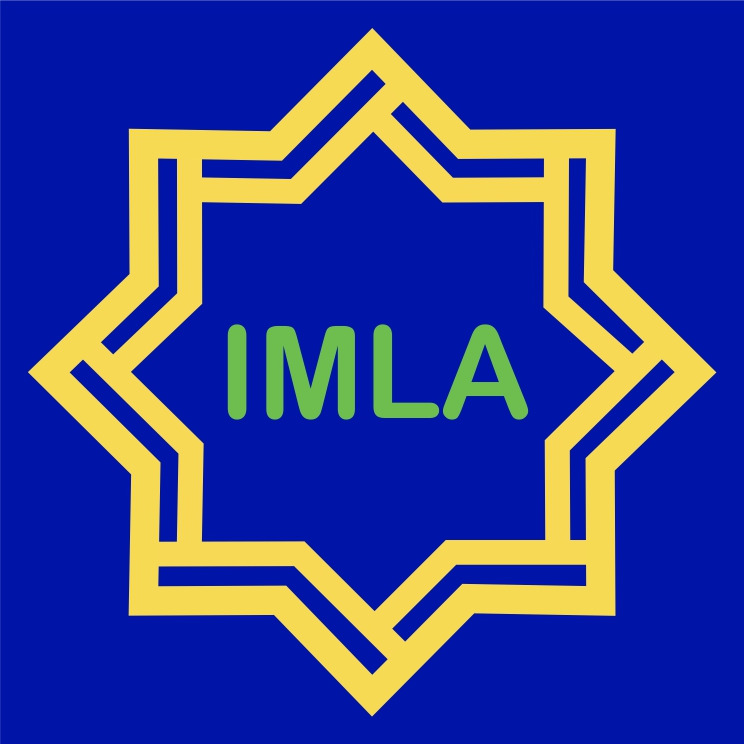Strategies to Improve the Quality of Arabic Language Education at the Public Service Entity (BLU) State Islamic Higher Education
Abstract
The purposes of this study were to describe and analyze the strategies for improving the quality of Arabic language education in BLU State Islamic Higher Education at UIN SATU Tulungagung and UIN Maliki Malang. The main problem faced by BLU (Public Service Agency) organizers, including PTKIN (State Islamic Higher Education Institution) that has BLU status, is the lack of alignment in understanding among stakeholders. UIN SATU Tulungagung and UIN Maliki Malang have successfully implemented specific strategies in managing their BLU campuses. This qualitative study used theoretical orientation/perspective analysis method with a phenomenological approach. The strategies implemented in UIN SATU Tulungagung included: a) Forming a BLU acceleration unit, b) Funding for improving the quality of Arabic language education which came not only from UKT, and c) BLU UIN SATU Tulungagung supported the improvement of the quality of Arabic language education with a principle of not being profit oriented. The strategies implemented in UIN Maliki Malang consisted of three strategies: a) National Contribution, providing solutions to community problems while considering the priority of achieving UIN Maliki Malang's target criteria; b) International Reputation, accelerating the achievement of UIN Maliki Malang's target criteria as a research university and world-class university; and c) Organizational Transformation, ensuring the successful implementation of PKBLU by adhering to the principles of transparency, accountability, responsibility, independence, and fairness.
Keywords
Full Text:
PDFReferences
Abdullah Mohammed Harbi. “Arabic Diglossia and Its Impact on the Social Communication and Learning Process of Non- Native Arabic Learners : Students ’ Perspective.” Arab World English Journal. King Khalid University, 2022.
Al-Omari, Fatmah. “Teaching Arabic Language for Non-Native Speakers in the Light of Modern Linguistics.” Dirasat: Human and Social Sciences 43, no. 3 (2016): 2529–36. https://doi.org/10.35516/0103-043-003-018.
Albantani, Azkia Muharom, and Ahmad Madkur. “Musyahadat Al Fidyu: Youtube-Based Teaching and Learning of Arabic as Foreign Language (AFL).” Dinamika Ilmu 17, no. 2 (2017): 291–308. https://doi.org/10.21093/di.v17i2.854.
Aminuddin. Metodologi Penelitian Kualitatif : Tinjauan Teoritis Dan Praktis. Malang: Lembaga Penelitian UNISMA, 2019.
Arifin, Zamri, Nur Khadijah Abu Bakar, Zaharom Ridzwan, and Ezad Azraai Jamsari. “Language Learning Strategies of Non-Muslim Students Applied to Arabic Language Course Inside and Outside the Classroom.” Ijaz Arabi Journal of Arabic Learning 4, no. 1 (2020): 1–11. https://doi.org/10.18860/ijazarabi.v4i1.9995.
Bogdan, R., & Biklen, S. K. Qualitative Research for Education. Boston: Allyn & Bacon, 1997.
Brosh, Hezi Y. “Arabic Language-Learning Strategy Preferences among Undergraduate Students.” Studies in Second Language Learning and Teaching 9, no. 2 (2019): 351–77. https://doi.org/10.14746/ssllt.2019.9.2.5.
Dewey, Dan P., R. Kirk Belnap, and Rebecca Hillstrom. “Social Network Development, Language Use, and Language Acquisition during Study Abroad: Arabic Language Learners’ Perspectives.” Frontiers: The Interdisciplinary Journal of Study Abroad 22, no. 1 (2013): 84–110. https://doi.org/10.36366/frontiers.v22i1.320.
Ghani, Kamarulzaman Abdul, Mohammad Shiham Mahfuz, and Abdul Jamir Md Saad. “Relationship between the Usage of Language Learning Strategies and the Level of Proficiency in Learning Arabic Ab Initio.” Asian Social Science 10, no. 9 (2014): 262–75. https://doi.org/10.5539/ass.v10n9p262.
Kurniawan, Rio, Sugeng Sugiyono, and Tulus Musthofa. “Integrative Arabic Language Teaching of Integrated Islamic Elementary Schools in Solo Raya.” Arabiyat : Jurnal Pendidikan Bahasa Arab Dan Kebahasaaraban 8, no. 1 (2021): 60–74. https://doi.org/10.15408/a.v8i1.20095.
Miles, M.B.;, and A.M. Huberman. Qualitative Data Analysis. 3rd ed. USA: Sage Publication, 2014.
Moh. Ulum, Siti Maisuroh, Rafika Milania, Moh. Taufiqur Rahman. “Rekonstruksi Pengembanagan Pendidikan Bahasa Arab.” Lisan An Nathiq: Jurnal Bahasa Dan Pendidikan Bahasa Arab 2, no. 2 (2021): 133–46.
Moleong, Lexy J. Metodologi Penelitian Kualitatif. Bandung: PT. Remaja Rosdakarya, 2005.
Prihartini, Yogia, and Wahyudi Buska. “Lecturers’ Speech Acts in Arabic Language Learning Interactions at UIN Sulthan Thaha Saifuddin Jambi.” Al-Ta Lim Journal 27, no. 1 (2020): 41–57. https://doi.org/10.15548/jt.v27i1.597.
Qomaruddin, Farid. “Pendidikan Bahasa Arab Berbasis Multikultural,” 1999, 77–86.
Ritonga, Mahyudin, Asrina, Rizka Widayanti, Fitri Alrasi, Julhadi, and Syaflin Halim. “Analysis of Arabic Language Learning at Higher Education Institutions with Multi-Religion Students.” Universal Journal of Educational Research 8, no. 9 (2020): 4333–39. https://doi.org/10.13189/ujer.2020.080960.
Ritonga, Mahyudin, Martin Kustati, Meliza Budiarti, Ahmad Lahmi, Musda Asmara, Rahadian Kurniawan, Neli Putri, and Endri Yenti. “Arabic as Foreign Language Learning in Pandemic COVID-19 as Perceived by Students and Teachers.” Linguistics and Culture Review 5, no. 1 (2021): 75–92. https://doi.org/10.21744/lingcure.v5n1.726.
Sugiyono. Metode Penelitian Pendidikan Pendekatan Kuantitatif, Kualitatif Dan R&D. Bandung: Alfabeta, 2015.
Syuhadak, Syuhadak, Danial Hilmi, and Inayatur Rosyidah. “Arabic Language Learning with Multicultural Perspective at State Islamic Universities in East Java.” LISANIA: Journal of Arabic Education and Literature 5, no. 2 (2021): 129–43. https://doi.org/10.18326/lisania.v5i2.129-143.
Taylor, S. J, Bogdan, R. Introduction to Qualitative Research Methods. New York: Oxford University Press, 1992.
Uril Bahruddina, Muhammad Fadli Ramadhana, Halomoan Halomoanb, Diaya Uddeen Deab Mahmoud Alzitawic, M Abdul Hamida. “The Quality Improvement of The Interaction Indicators of The Arabic Language Learning in Higher Education.” Izdihar : Journal of Arabic Language Teaching, Linguistics, and Literature 4, no. 1 (2021): 59–70. https://ejournal.umm.ac.id/index.php/izdihar/article/view/15919.
Wekke, Ismail Suardi, and Maimun Aqsha Lubis. “A Multicultural Approach in Arabic Language Teaching: Creating Equality at Indonesian Pesantren Classroom Life.” Sosiohumanika 1, no. 2 (2016): 295–310. http://mindamas-journals.com/index.php/sosiohumanika/article/view/337%5Cnhttp://mindamas-journals.com/index.php/sosiohumanika/article/download/337/336.
DOI: http://dx.doi.org/10.29240/jba.v7i1.5707
Refbacks
- There are currently no refbacks.
Copyright (c) 2023 Ahmad Nurcholis, Umar Faruq, Timbul Timbul, Budi Harianto, Nur Arifuddin, Syaikhu Ihsan Hidayatullah

This work is licensed under a Creative Commons Attribution-NonCommercial-ShareAlike 4.0 International License.
Arabiyatuna: Jurnal Bahasa Arab, Indexed by:
Arabiyatuna: Jurnal Bahasa Arab, Visitor Counter:
Arabiyatuna: Jurnal Bahasa Arab, Copyright (c):
 This work is licensed under a Creative Commons Attribution-NonCommercial-ShareAlike 4.0 International License.
This work is licensed under a Creative Commons Attribution-NonCommercial-ShareAlike 4.0 International License.Arabiyatuna: Jurnal Bahasa Arab
Scientific Publication Center
Research and Comunity Service Agency
Institut Agama Islam Negeri Curup
Dr. Ak. Gani Street No. 01 Telp. (0732) 21010
Curup-Rejang Lebong, Bengkulu-Indonesia 39119











